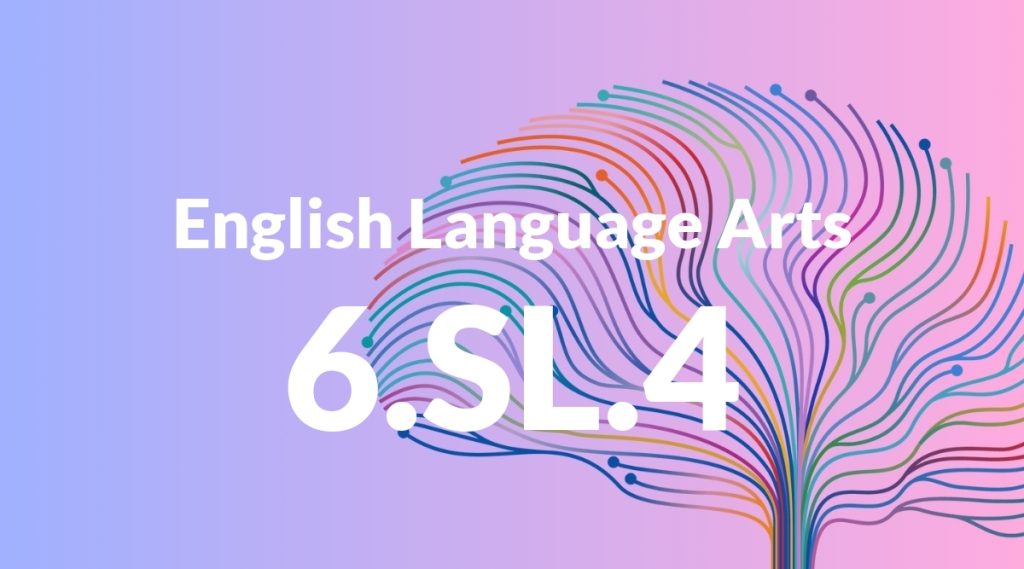Standard: 6.SL.4 – Present claims and findings, sequencing ideas logically and using pertinent descriptions, facts, and details to accentuate main ideas or themes; use appropriate eye contact, adequate volume, and clear pronunciation.
Grade level: Grade 6
Subject: English Language Arts
Domain: Speaking & Listening
Teacher Overview
This standard emphasizes the importance of presenting information in a clear and logical manner. It requires students to use descriptions, facts, and details to support their main ideas while maintaining appropriate eye contact, volume, and pronunciation. Mastering this skill is crucial for effective communication and is foundational for future academic and real-world success. Students should have foundational public speaking skills, including making eye contact, speaking clearly, and organizing their thoughts. They should be familiar with constructing simple arguments and using descriptive language.
After mastering this standard, students will be able to engage in more complex presentations, including persuasive speeches and multimedia presentations. They will also develop skills in critical listening and providing constructive feedback.
Common Misconception 1
A common misconception is that speaking louder is more important than speaking clearly. This is incorrect because clarity ensures that the audience understands the message, while volume alone does not.
Intervention 1
To remediate this misconception, provide exercises that focus on enunciation and pacing. Use tools like tongue twisters and recording devices to help students practice speaking clearly.
Common Misconception 2
Another misconception is that eye contact means staring at one person the entire time. This is incorrect because effective eye contact involves scanning the room and engaging with multiple audience members.
Intervention 2
Teach students to make brief eye contact with different audience members. Practice this skill through role-playing and peer feedback sessions.
Prerequisite Knowledge
Students should understand basic public speaking skills, including making eye contact, speaking clearly, and organizing their thoughts. They should also be familiar with constructing simple arguments and using descriptive language.
Subsequent Knowledge
After mastering this standard, students will be able to engage in more complex presentations, including persuasive speeches and multimedia presentations. They will also develop skills in critical listening and providing constructive feedback.
Instructional Activities
- Practice presenting short speeches in front of the class.
- Engage in group discussions where each student presents a point.
- Conduct peer reviews of presentations to provide constructive feedback.
- Use multimedia tools to enhance presentations.
- Role-play different scenarios that require public speaking.




